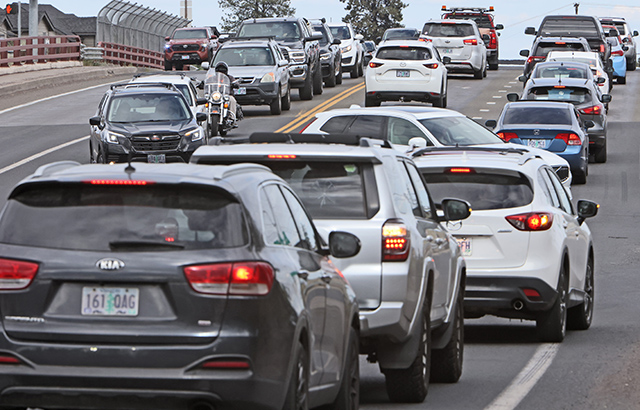Remembering a time when sports helped console a grieving nation
Published 12:00 am Wednesday, August 8, 2018

- In a photo provided by Jin Lee/9/11 Memorial & Museum, the racing bib that was to be worn by Danielle Kousoulis, who died at the World Trade Center in the 9/11 terrorist attacks, part of a new exhibition at the 9/11 Memorial & Museum in New York. Several lump-in-the-throat, intimate stories that allowed fans to temporarily forget the tragedy have emerged at the museum. (Jin Lee/9/11 Memorial & Museum via The New York Times) -- NO SALES; FOR EDITORIAL USE ONLY WITH NYT STORY SEPT11-MUSEUM-SPORTS BY RICHARD SANDOMIR FOR AUG. 06, 2018. ALL OTHER USE PROHIBITED. --
NEW YORK — Three days after the terrorist attacks of Sept. 11, 2001, Brielle Marie Saracini, whose father was the pilot of one of the four hijacked airplanes, wrote a letter to New York Yankees superstar Derek Jeter. It was a plain-spoken and evocative message from a grieving 10-year-old whose life had been irrevocably altered.
“Terrible people are in this world, but you and I both know that!” she told Jeter. Her family was besieged by the news media (“We do not want to be attacked by newscasters”). Friends were answering the family’s phone and door.
Trending
Her one wish, she wrote, was to meet him.
“Out of respect,” she wrote in a computer font that gave her letter a flowing script, “I would love if you would pay me a visit.”
Jeter called quickly and less than two weeks later Brielle, her sister Kristen and their mother, Ellen, were his guests at Yankee Stadium. They sat in his seats behind home plate and received two of his gloves as gifts.
“We made her smile, at least for today,” Jeter said.
The letter is one of the many artifacts featured in “Comeback Season: Sports After 9/11,” a new exhibition at the 9/11 Memorial & Museum in lower Manhattan that examines the impact of sports in the days, weeks and months after the attacks.
Sports may not always seem important — they are just games, aren’t they? — but they are tribal events that unify people in large communal settings for a common purpose. After games resumed in the wake of 9/11, stadiums and arenas allowed fans to temporarily forget the tragedies at the World Trade Center, the Pentagon and Shanksville, Pennsylvania, or express a lump-in-the-throat patriotism that transcended chants of “USA! USA!”
Trending
“Baseball Has Players,” read one fan’s sign that is part of the exhibition. “America Has Heroes.”
“Comeback Season” uses its massive space and muted lighting to simultaneously convey grand scale and intimacy, and to reinforce its sophisticated blend of broad and personal storytelling. The winding arrangement of the exhibition almost requires visitors to move slowly to each of its nine stations, which have titles like “Timeout” and “Rivalries Dissolve.”
Huge photographic blowups — of post-9/11 sports events like the NASCAR race in Dover, Delaware, and the start of the New York City Marathon — form the backdrops to display cases that contain items like tickets to canceled games, rubble recovered at ground zero by New York Jets quarterback Vinny Testaverde, and the dress uniform worn by Pat Tillman, the former NFL player who gave up his football career to enlist after 9/11 and was killed in Afghanistan, accidentally shot by fellow Army Rangers.
Seventeen years later, it is impossible to forget the emotional release that was produced by New York Mets catcher Mike Piazza when he hit the go-ahead, eighth-inning home run against the Atlanta Braves in the first high-profile sporting event in New York City after a post-9/11 hiatus. A television replay of Piazza’s soaring homer plays in a loop. His No. 31 white jersey is here as well.
But what makes “Comeback Season” most compelling are not the easy-to-recall moments, but stories of lesser renown, like the miniature football that was recovered at the World Trade Center. You cannot help but wonder if it was being tossed around by colleagues that morning before their workday began.
Or the white racing bib (No. 5494) that Danielle Kousoulis, 29, a vice president of the Cantor Fitzgerald brokerage and ardent runner, was going to wear during the half-marathon in Philadelphia five days after she died in the north tower. Who would have been cheering her on? What would she have told her co-workers the following Monday?
Or the sled that a ground zero emergency medical technician, Michael Voudouris, who aided in the rescue, had turned into a shrine to fellow EMT’s — and others — who died in the attacks. He was planning to race headfirst on the skeleton ice track at the 2002 Winter Olympics in Salt Lake City for Greece (he has U.S. and Greek citizenship), but the International Bobsleigh & Skeleton Federation, acting on a recommendation of the International Olympic Committee, ruled that the names and imagery of the twin towers he had added to the bottom of his sled violated its rules.
In the show — sponsored in part by Major League Baseball and the New York Mets — interesting curatorial juxtapositions abound.
One of the most dramatic is the positioning of two outsized photographs. One shows President George W. Bush throwing out the first pitch of Game 3 of the 2001 World Series at Yankee Stadium. The second shows Bernard Brown, a Navy chief petty officer, carrying the Olympic flame in late 2001 in memory of his 11-year-old son, Bernard Jr., who died in the plane that crashed into the Pentagon.
The two images face each other from opposite walls: one man trying to lead a nation out of an act of war, another trying to keep his son’s memory alive.








